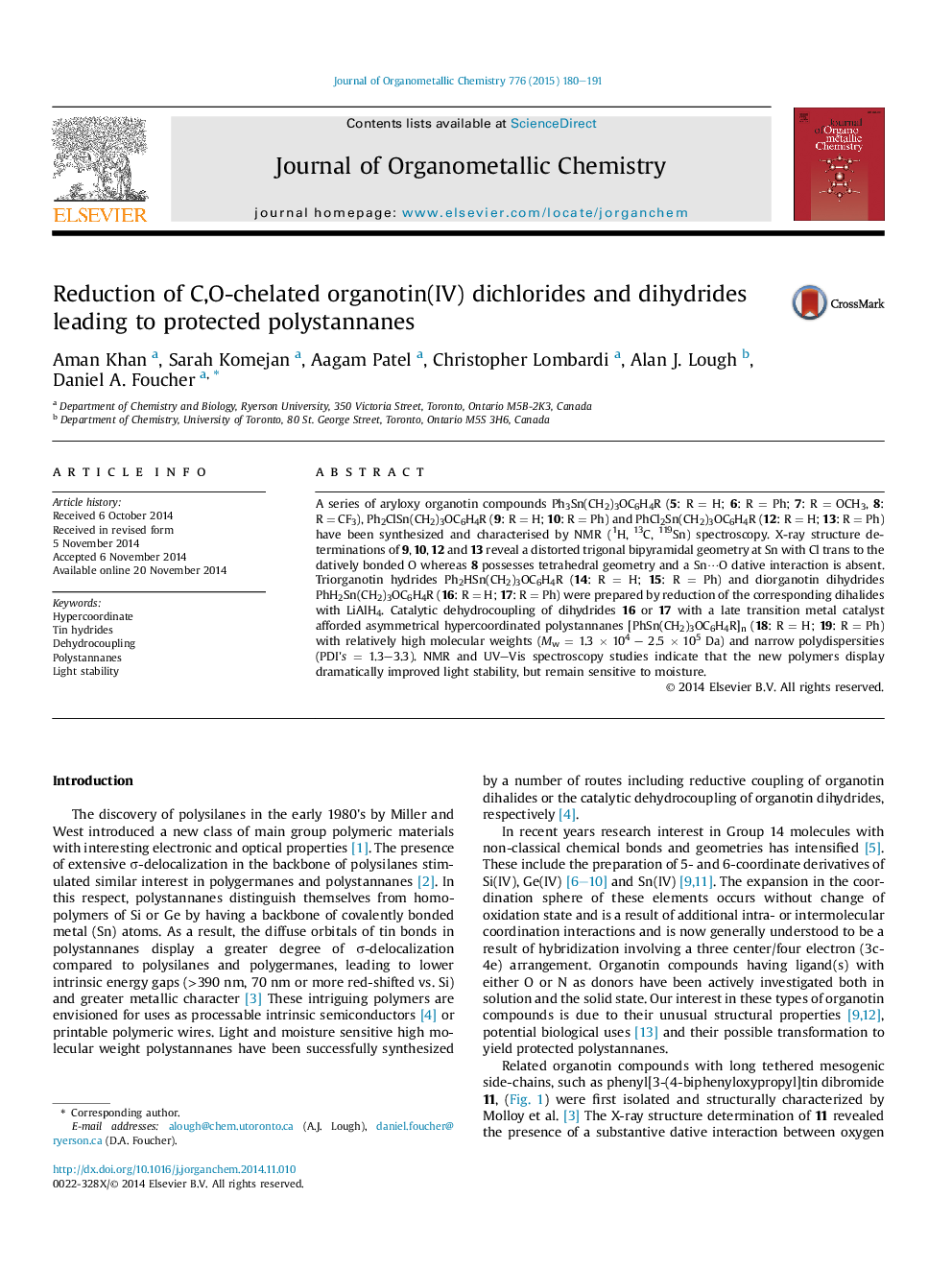| کد مقاله | کد نشریه | سال انتشار | مقاله انگلیسی | نسخه تمام متن |
|---|---|---|---|---|
| 1322179 | 1499866 | 2015 | 12 صفحه PDF | دانلود رایگان |

• Hypercoordinate tin halides show substantive Sn⋯O interactions in the solid state.
• Sequential chlorination with HCl leads to high yields of mono- and di-tin chlorides.
• Dehydropolymerization of asymmetric stannanes using Wilkinson's catalyst.
• High molecular weight polystannanes recovered with improved light stability.
• Polystannanes with bulky asymmetric side groups show some moisture sensitivity.
A series of aryloxy organotin compounds Ph3Sn(CH2)3OC6H4R (5: R = H; 6: R = Ph; 7: R = OCH3, 8: R = CF3), Ph2ClSn(CH2)3OC6H4R (9: R = H; 10: R = Ph) and PhCl2Sn(CH2)3OC6H4R (12: R = H; 13: R = Ph) have been synthesized and characterised by NMR (1H, 13C, 119Sn) spectroscopy. X-ray structure determinations of 9, 10, 12 and 13 reveal a distorted trigonal bipyramidal geometry at Sn with Cl trans to the datively bonded O whereas 8 possesses tetrahedral geometry and a Sn⋯O dative interaction is absent. Triorganotin hydrides Ph2HSn(CH2)3OC6H4R (14: R = H; 15: R = Ph) and diorganotin dihydrides PhH2Sn(CH2)3OC6H4R (16: R = H; 17: R = Ph) were prepared by reduction of the corresponding dihalides with LiAlH4. Catalytic dehydrocoupling of dihydrides 16 or 17 with a late transition metal catalyst afforded asymmetrical hypercoordinated polystannanes [PhSn(CH2)3OC6H4R]n (18: R = H; 19: R = Ph) with relatively high molecular weights (Mw = 1.3 × 104 – 2.5 × 105 Da) and narrow polydispersities (PDI's = 1.3–3.3). NMR and UV–Vis spectroscopy studies indicate that the new polymers display dramatically improved light stability, but remain sensitive to moisture.
Reduction of hypercoordinated dichlorostannanes with LiAlH4 yields new polymerizable stannanes that undergo dehydrocoupling at room temperature in the presence of a late transition metal catalyst leading to the isolation of light tolerant, asymmetrical polystannanes.Figure optionsDownload as PowerPoint slide
Journal: Journal of Organometallic Chemistry - Volume 776, 15 January 2015, Pages 180–191